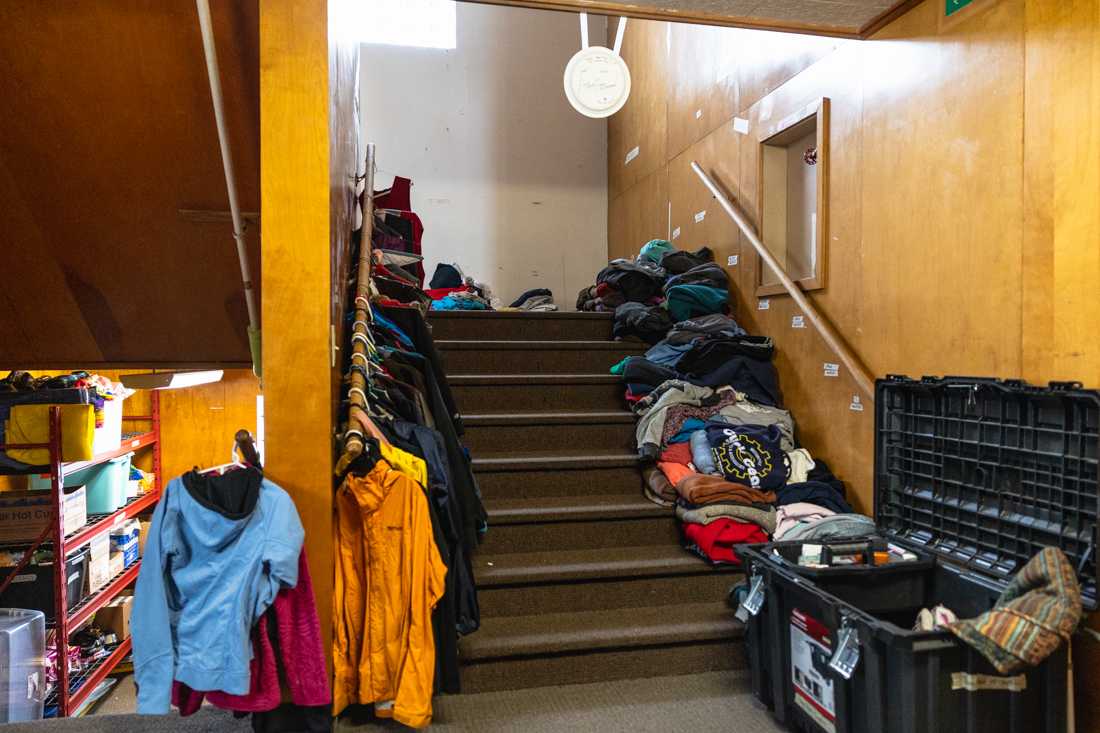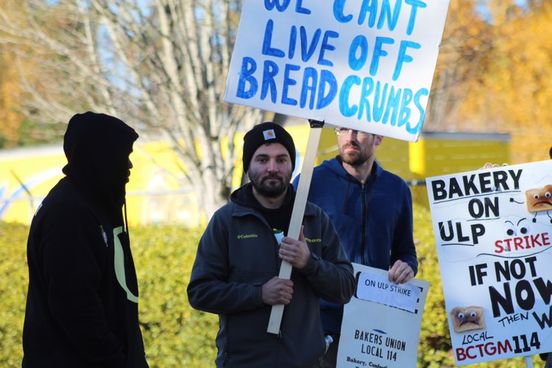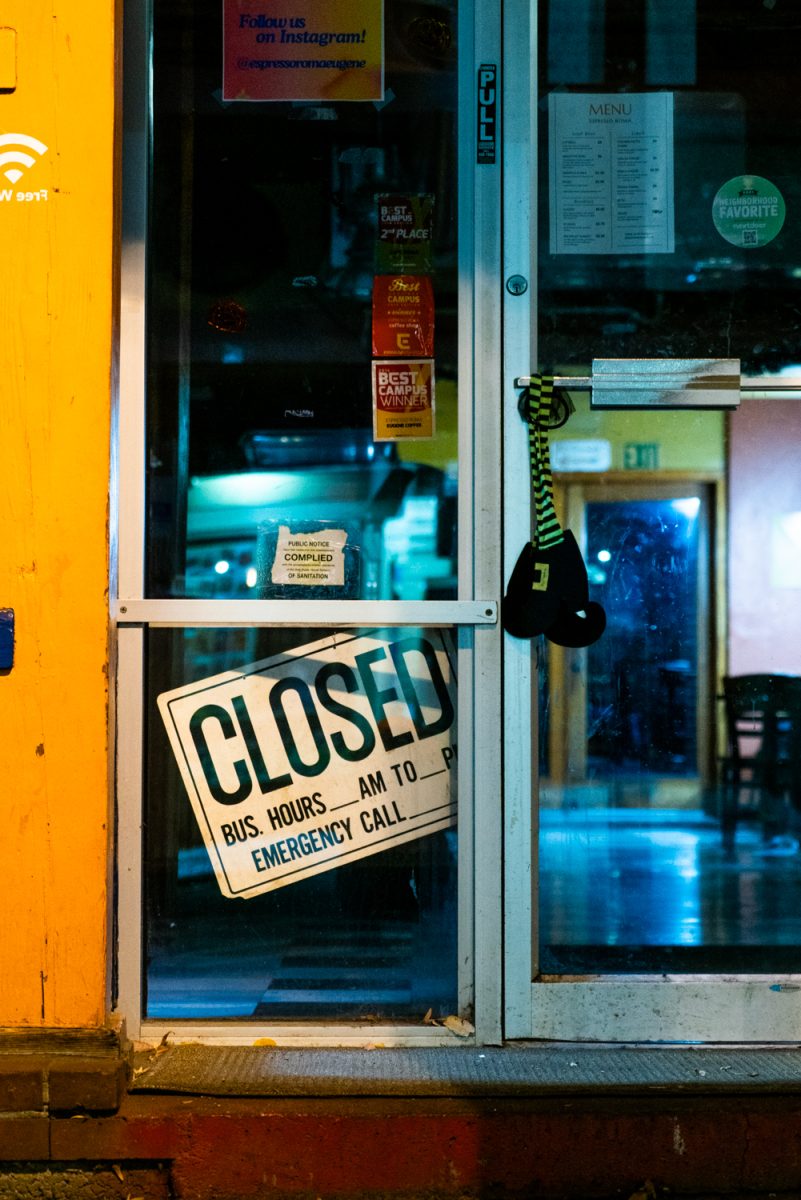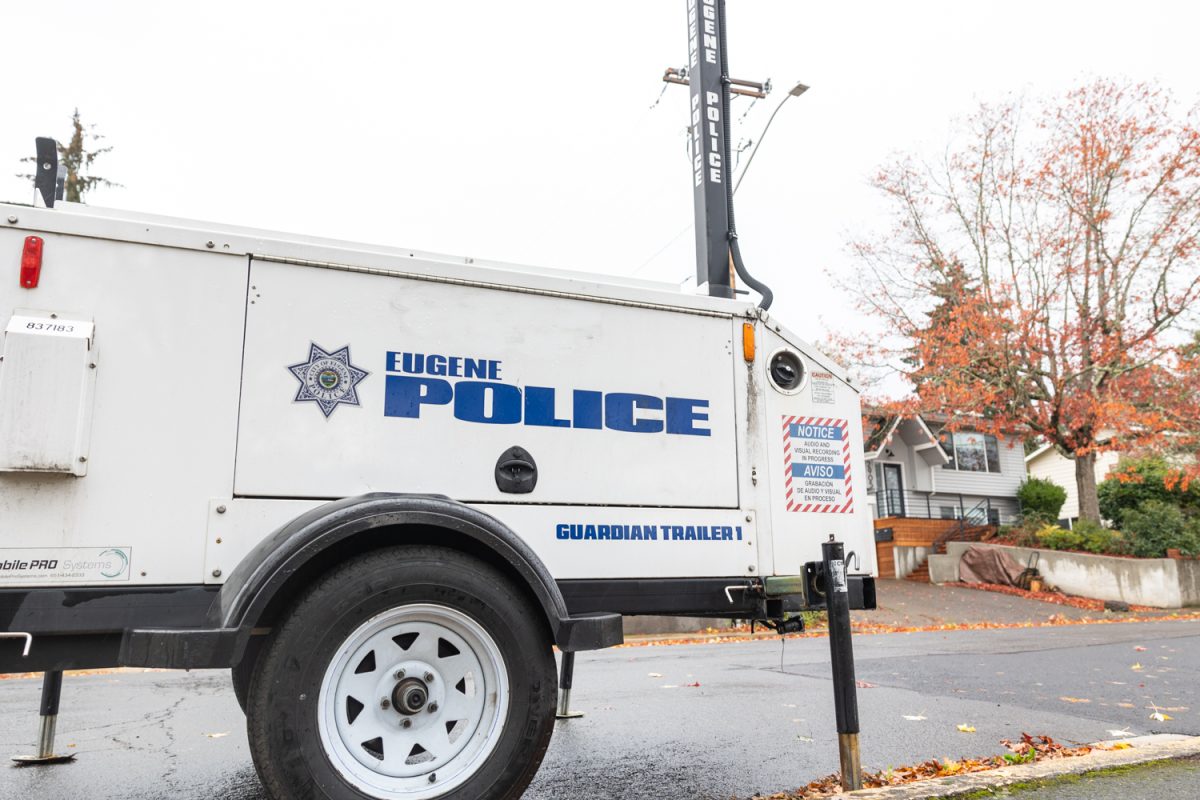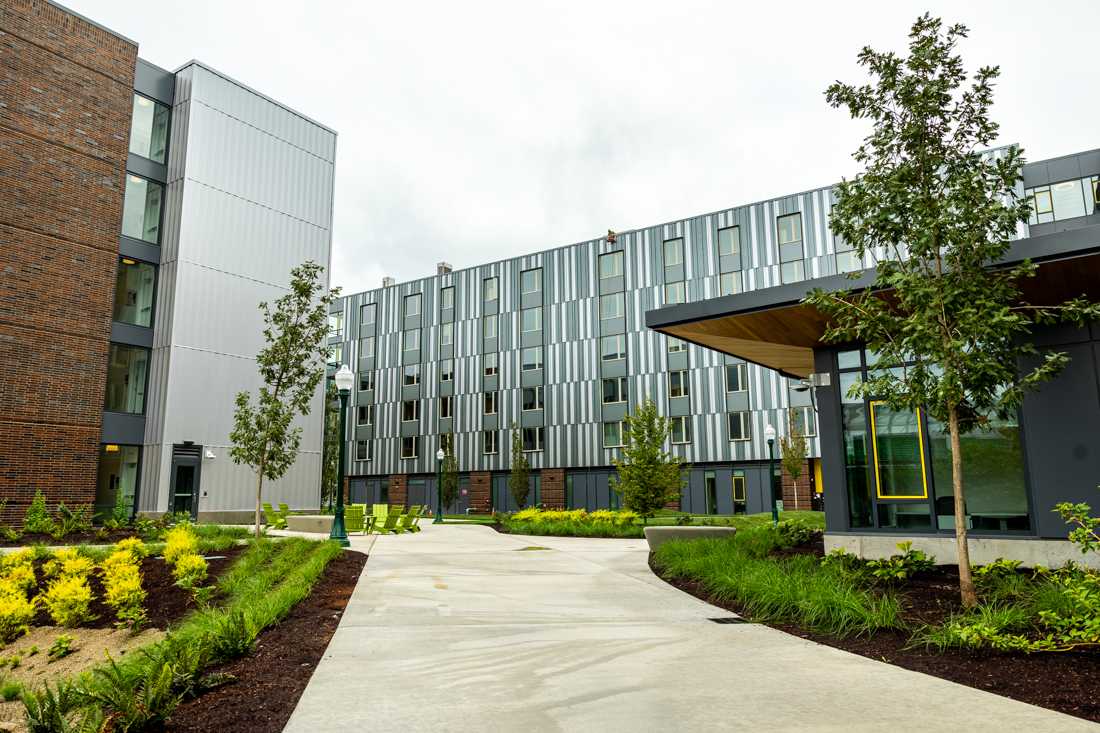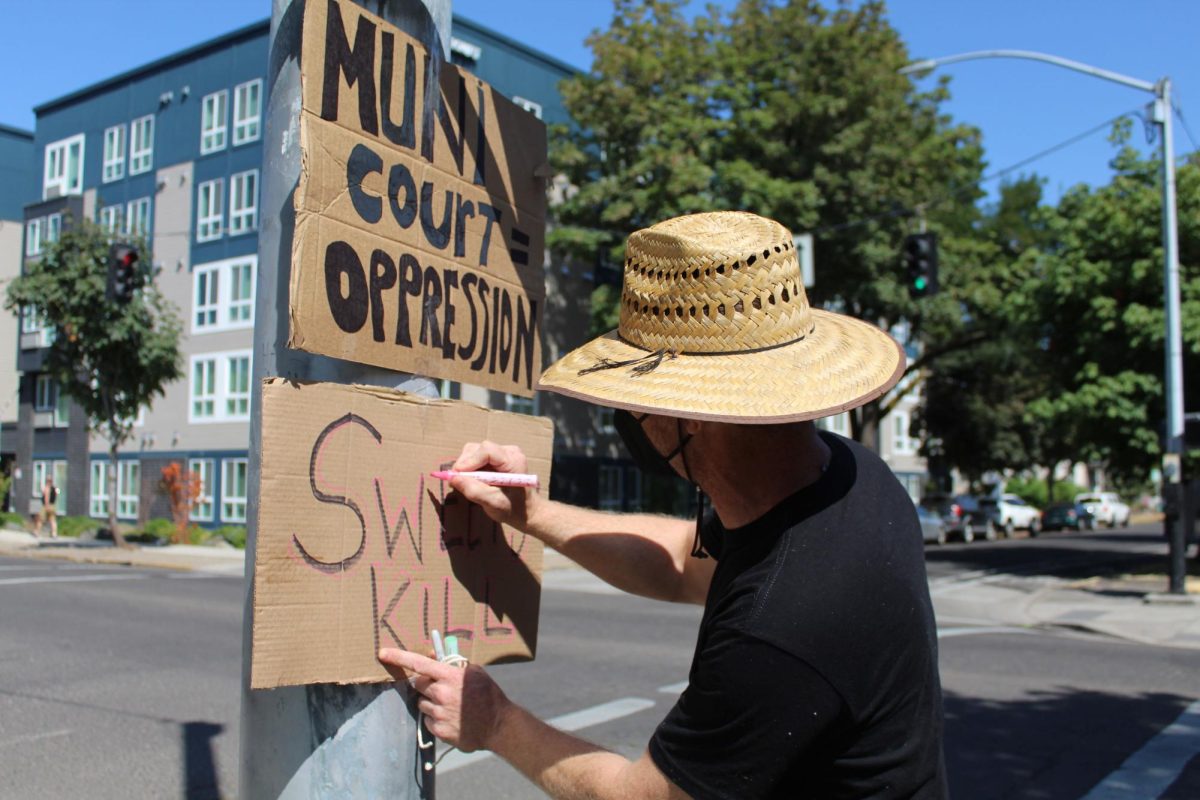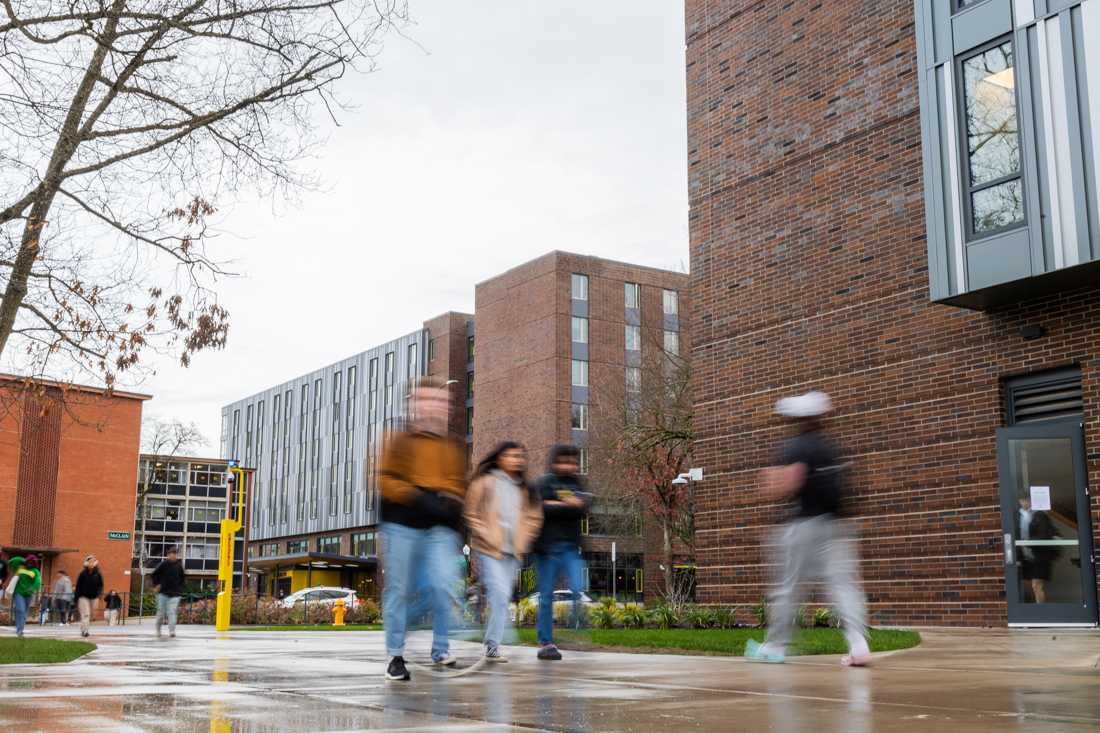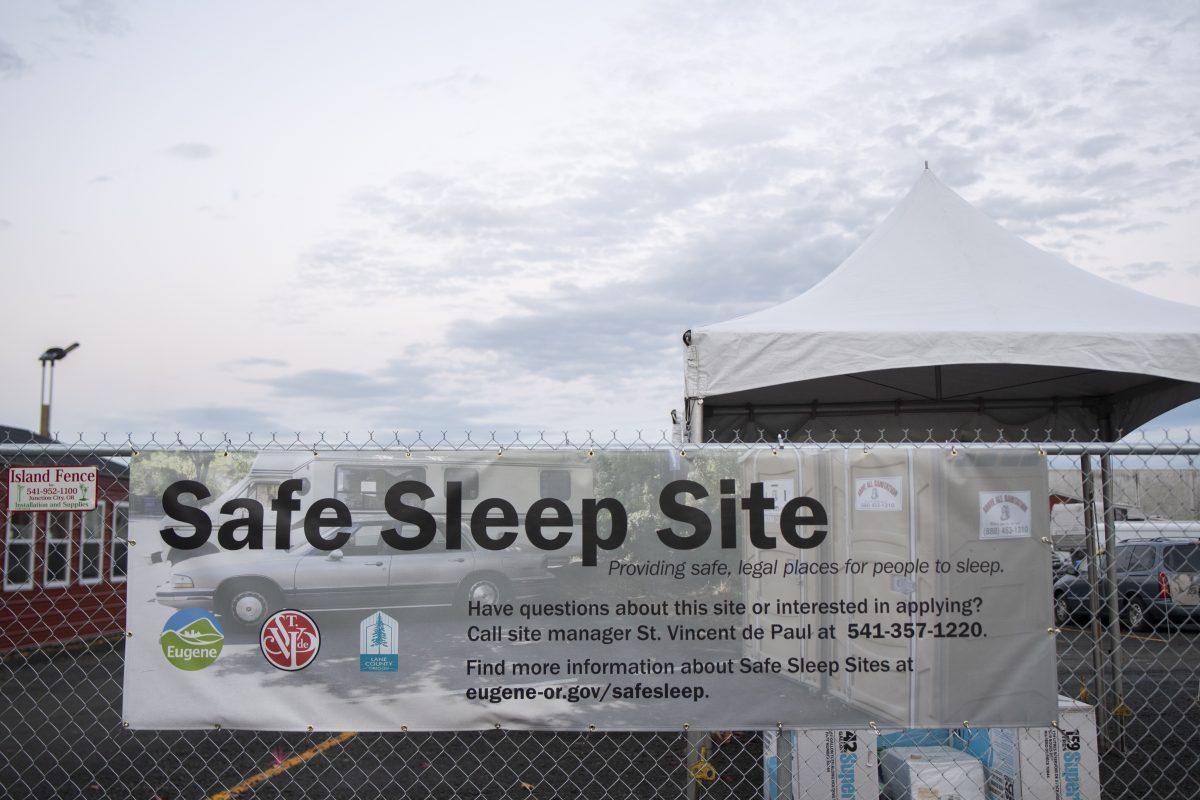The mid-January ice storm that prompted Lane County to issue a state of emergency has brought up community conversations about what to do if something similar were to happen again. During the ice storm, hundreds of people without shelter and whose homes were destroyed stayed at the Egan Warming Centers in Eugene and Springfield.
Tim Black, the emergency response coordinator at St. Vincent de Paul, was at the warming center during the storm.
“We were over 100 [people] the first couple of nights,” Black said. “And then that last night in Wheeler Pavilion there were 270 or so guests inside there.”
Egan Warming Center was “overwhelmed” with guests without homes for four days. Low-income retirement communities from Thurston were brought to the warming center after they were without power, which in turn has prompted conversations over county resources and future plans should encounter another state of emergency.
“Thurston out in Eastern Springfield really was hit the hardest. It just looked like a bomb went off over there,” Black said. “There were some people whose lives were in danger because of the extended cold and the police brought some of those folks to our Egan Warming Center.”
Although EWC’s doors are open to anyone who needs assistance, people from Thurston retirement communities were not a part of the community Egan traditionally serves.
“Egan Warming Center became what you would think of as a Red Cross Mass shelter facility. And that’s not what Egan is for,” Black said. “I think they recognize they cannot put all of that on volunteers. It was really close to that moment where it was going to break and we couldn’t do it anymore.”
The Egan Warming Center had been calling on the community for more volunteers during this time due to the unprecedented amount of guests that arrived seeking shelter. Volunteers like Rebecca Wettmore were unable to make it in due to complications brought on by the storm.
“My car was iced in,” Wettmore said. “And I was ready to tie my shoes and go down there.”
On Tuesday, Jan. 16, the Egan Warming Center in Springfield stayed open later than what was standard protocol. EWC in Springfield kept its doors open continuously from 5 pm to 3 pm on Wednesday.
When asked about where guests went during the day, Black said EWC offered rides downtown.
“St. Vincent de Paul runs the Eugene service station. They opened every day. That was an option during the day and they were overcrowded there.” Black said. “They really had very few options and places to go.”
According to Black and Wettmore, EWC provides a low-barrier shelter and meals to its guests. But one question continued to resurface amongst guests and volunteers, according to Black and Wettmore: what will EWC do if another severe storm were to happen again, and will they have enough supplies to last them the two weeks that the county asks them to have?
“A lot of the conversations in the city and the county people are talking about: ‘be ready to go for two weeks,’ meaning ‘do you have everything you need to take care of, everything you need to take care of for two weeks without anything new coming in?’But we don’t have enough supplies. We would never have enough blankets on site for two full weeks,” Black said.
The blankets and food supplies were some challenges that Egan Warming Center had to overcome, but there were also concerns over Port-o-Potties at the Wheeler Pavilion.
“One of the hardest things was, we use Port-o-Potties,” Black said. “We had the same four Port-o-Potties at the Wheeler Pavilion throughout this whole activation. The Port-o-Potty company was not able to get out and service them because of the ice.”
Charlotte Helmer, a volunteer Site Lead at the Springfield EWC also said that there were issues with Port-o-Potties, medical emergencies and power outages.
“At times, there were just four volunteers in the building with more than 100 guests.,” Helmer said. “There were also two black outs, several medical emergencies, frozen overfull portable toilets, and other challenges in the shelter that risked life and safety.”
Port-o-Potties typically have to be serviced once a week, however, service is highly dependent on the amount of people using them.
“The one thing I like to remind folks right now when we are talking about this horrible storm, every night is that kind of trauma for somebody who doesn’t have a permanent shelter,” Black said. “For our homeless population, every night is that trauma of wondering how they’re going to survive.”
Donated goods sit along the walls and stairs inside the center. First United Methodist, Egan Youth Site is located on A St. in Springfield Ore. Egan Warming Centers serve as night shelters for houseless individuals; the centers are only open on nights projected to be below 30 F. (Molly McPherson/Emerald)




